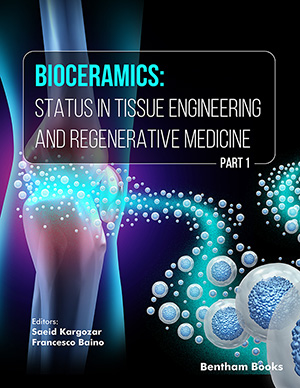Abstract
SHS investigation development is considered from the geographical and historical viewpoint. 3 stages are described. Within Stage 1 the work was carried out in the Department of the Institute of Chemical Physics in Chernogolovka where the scientific discovery had been made. At Stage 2 the interest to SHS arose in different cities and towns of the former USSR. Within Stage 3 SHS entered the international scene. Now SHS processes and products are being studied in more than 50 countries.
Abstract
Bioactive glasses, as pioneering artificial biomaterials, uniquely establish strong bonds with hard and soft native tissues by forming a bone-like hydroxyapatite layer in contact with physiological body fluid. This hydroxyapatite layer, mimicking the inorganic phase of natural bone, adds a fascinating dimension to their biomedical significance. Comprising three primary components; network formers, network modifiers, and intermediate oxide components; bioactive glasses allow tailored properties through component variation. While extensively explored for broadening biomedical applications, especially in regenerative medicine, their use is constrained by inherent mechanical shortcomings such as brittleness, fragility, and poor elasticity. Ongoing studies focus on incorporating bioactive glasses into composite/hybrid biomaterials with biopolymers, aiming to optimize mechanical properties for diverse biomedical applications, especially in load-bearing sites of hard tissues. Despite successful applications, the mechanical limitations persist, prompting investigations into the influence of composition and processing methods on bioactive glass properties. Notably, doping bioactive glasses with metallic ions at lower concentrations emerges as a promising avenue, enhancing mechanical and biological attributes, including bioactivity, osteogenicity, osteoinductivity, and antibacterial effects. This chapter provides a comprehensive examination of three bioactive glass types, accentuating their structures, properties, and processing methods. Additionally, it delves into property modifications facilitated by metallic ion dopants, contributing valuable insights to the evolving landscape of biomaterials.
Keywords:
Amorphous solids, Bioactive glass, Bioactivity, Borate, Bridging oxygen atom, Doping, Melt-quench, Network connectivity, Network formers, Network modifiers, Non-bridging oxygen atom, Phosphate, Silicate, Sol-gel.
We recommend

Authors:Bentham Science Books






